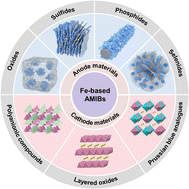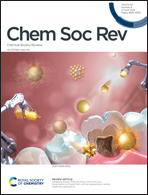Progress and perspectives on iron-based electrode materials for alkali metal-ion batteries: a critical review
Abstract
Iron-based materials with significant physicochemical properties, including high theoretical capacity, low cost and mechanical and thermal stability, have attracted research attention as electrode materials for alkali metal-ion batteries (AMIBs). However, practical implementation of some iron-based materials is impeded by their poor conductivity, large volume change, and irreversible phase transition during electrochemical reactions. In this review we critically assess advances in the chemical synthesis and structural design, together with modification strategies, of iron-based compounds for AMIBs, to obviate these issues. We assess and categorize structural and compositional regulation and its effects on the working mechanisms and electrochemical performances of AMIBs. We establish insight into their applications and determine practical challenges in their development. We provide perspectives on future directions and likely outcomes. We conclude that for boosted electrochemical performance there is a need for better design of structures and compositions to increase ionic/electronic conductivity and the contact area between active materials and electrolytes and to obviate the large volume change and low conductivity. Findings will be of interest and benefit to researchers and manufacturers for sustainable development of advanced rechargeable ion batteries using iron-based electrode materials.



 Please wait while we load your content...
Please wait while we load your content...